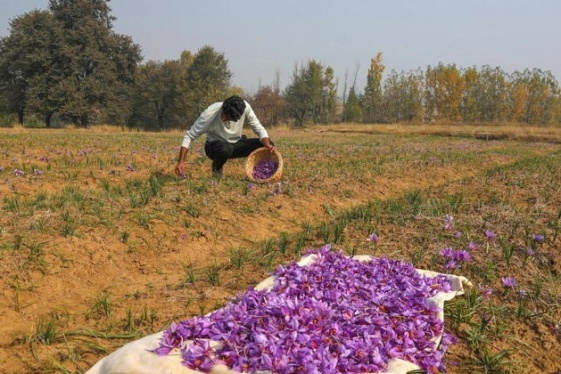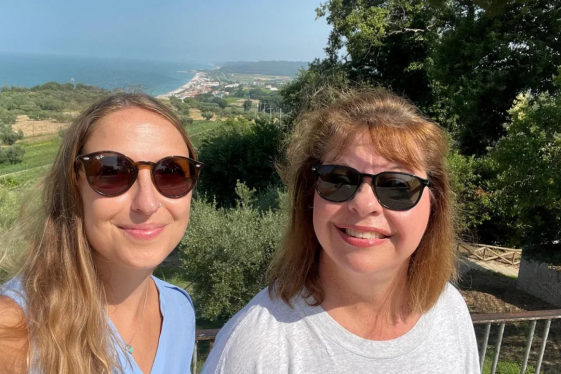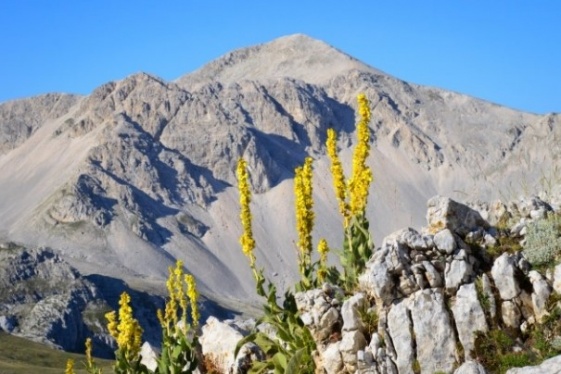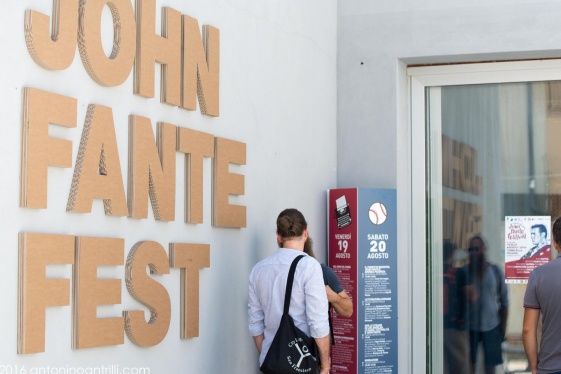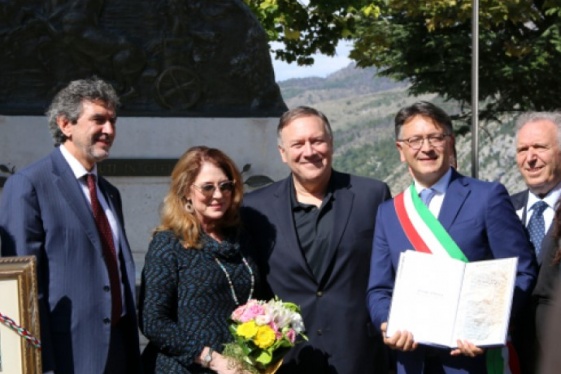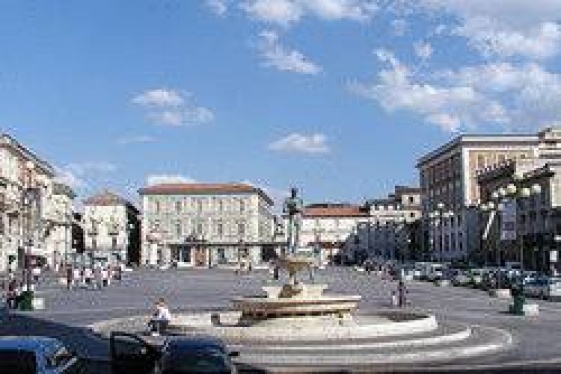

From the woods of Mt. Maiella, the Borgo of Caramanico looks like “a melt of Acropolis”, as city planners call high middle ages settlements that have this kind of structure. The village was founded in Longobard period on a promontory at the confluence of two rivers, the Orfento and the Orta. The main path develops on the line of the ridge, with atop the fortification, which had to be defended not only from the castle, now reduced to ruins, but also from the same main church, the almost millenarian abbey of Santa Maria Maggiore, equipped for this purpose with robust walls.
The Abbey has a magnificent gothic portal dated 1452, surmounted by a lunette with a refined bas-relief representing the coronation of the Virgin,by the German artist John from Luebeck. The inside, rebuilt in the XVI century and enriched with the late sixteenth century stone altar of the Assumption, with polychrome marbles, twisted columns, and a wooden fifteenth century Crucifix. If the church of the Trinity can certainly not compete with the nearby abbey of Santa Maria Maggiore, in the nearby Via Verdi you’ll admire two beautiful Palaces, D’Aquino e Salerni, built in 1706 after the earthquake and rich in coats of arms. Do not miss to visit the Church of San Tommaso d’Aquino with a Romanesque portal surmounted by a rose window, whose construction began in 1401, The Church was erected at the behest of the Dominican friar Giacomo d’Aquino in memory of his famous ancestor Thomas. Today the building is used as an Auditorium.
The lower part of the Borgo is the most authentic one, here you can visit the church of San Nicola di Bari, with a sober neoclassical façade and a remarkable Baroque portal dated 1592. The statue of St Nicholas in the central niche dates back to the XIII century.
Even if the plaster has gradually covered the facades of the buildings, the district of San Maurizio remains the heart of this Borgo, with the votive shrines scattered in the streets, with images of the Birgin Mary carved by local stonemasons. In this part of the Borgo you’ll find the church of San Maurizio, already mentioned in 1301, and the former Clarisse convent , founded in 1636 and presently the seat of the Museum Fauna Abruzzese.
Five km away from the center you can visit San Tommaso hamlet with the most important religious building of the area: the Romanesque Abbey of Saint Thomas Becket, whose construction started in 1202 together with the annexed convent, which was left unfinished. In spite of the restructuring, and the crashes caused by earthquakes, the church retains artistic treasures, such as the splendid high relief of the Christ blessing with the twelve Apostles on the central portal and the thirteenth century frescoes in the three naves of the Church.
Entering from the side door, to the right, is the Colonna Santa (Saint Column), a strange monolith with a Corinthian capital, which was considered miraculous by those who, imploring the grace of good health, rubbed against it. In the crypt, on the other hand, a spring water refers to ancient pre-Christians cults and to the virtues of thaumaturgic Maiella waters.
The name
The origin of the name is probably Lombard. The foundation of Caramanico is related to a settlement of a Lombard community, probably a group of soldiers.
Pleasures and flavors
Caramanico is located at the entrance of the Orfento canyon and the Orta river valley, in the Maiella National Park. It combines the thermal vocation with uncontaminated natural scenery. The Orfento nature reserve is an area of the Apennines, in whose beech woods the wolf, the Marsican bear, the deer, the roe deer and the chamois have returned to live. It is not rare to see the golden eagle circling high river, which draws its course between jumps and waterfalls, in a silence broken only by the flow of water. Hermits and monks have found here the places of their ascesis, founding churches and hermitages set in the rock of the Maiella.
The two hermitages frequented by Celestine V, the hermit monk who became Pope, are the hermitage of St. Bartholomew at 650 meters above sea level, at the top of the valley of the Holy Spirit, camouflaged in the rock through a balcony in which there are a rocky church and two small cells; and the hermitage of St. John, more difficult to access, located at 1220 meters in a scenic point of the Orfento valley. Going down to 860 meters of altitude, you arrive Decontra, a small village that retains a core of stone houses. The view from here is marvelous: Mount Morrone and the north-western slope of the Maiella divided by the Orta valley. At the Luchi, in the lower part of the Orta valley, the river digs a short limestone canyon in a natural environment of woodland patches and rocky outcrops.
The typical dish is pasta "alla chitarra" with lamb sauce (chitarra is a handmade egg pasta), which can be followed by a cheese board, or a meat dish (sheep, pork or beef) including black pork and wild boar.
Millefiori della Maiella, produced in Caramanico by Pietro Amoroso is the best honey in Italy, decreed in 2008 by a jury of Italian tasters.
You may be interested
-
'Saffron tourism' takes hold in Italy, harves...
Saffron tourism is the holiday of choice for a growing number of people fascinated by the...
-
‘My money goes a lot further here’: This woma...
After dealing with the death of her mother, losing her job of 10 years and finalizing her...
-
‘Path of Bandits’: Walking Through a Little-K...
150 years ago, at the border between the central Italian regions of Lazio and Abruzzo, the...
-
"John Fante Riesce A Parlare Anche Alle Nuove...
Sono stati presentati a Roma i tre finalisti della tredicesima edizione del 'Premio John F...
-
“Dalla parte di John Fante” uscito il nuovo l...
Manca un mese alla XV edizione del ‘John Fante Festival – Il dio di mio padre’ (in program...
-
“Messaggero di sant’Antonio”: Stati Uniti. Cu...
Dal numero di dicembre del "Messaggero di sant'Antonio", edizione per l'estero Un grande...
-
“Welcome home”: l’abbraccio stelle&strisce di...
Bandiere a stelle e strisce, un paese blindato, uomini addetti alla sicurezza delle forze...
-
“Woodstock of Jazz” coming to L’Aquila
Six hundred musicians, 100 concerts, 20 venues and 12 hours of continuous music will rende...



